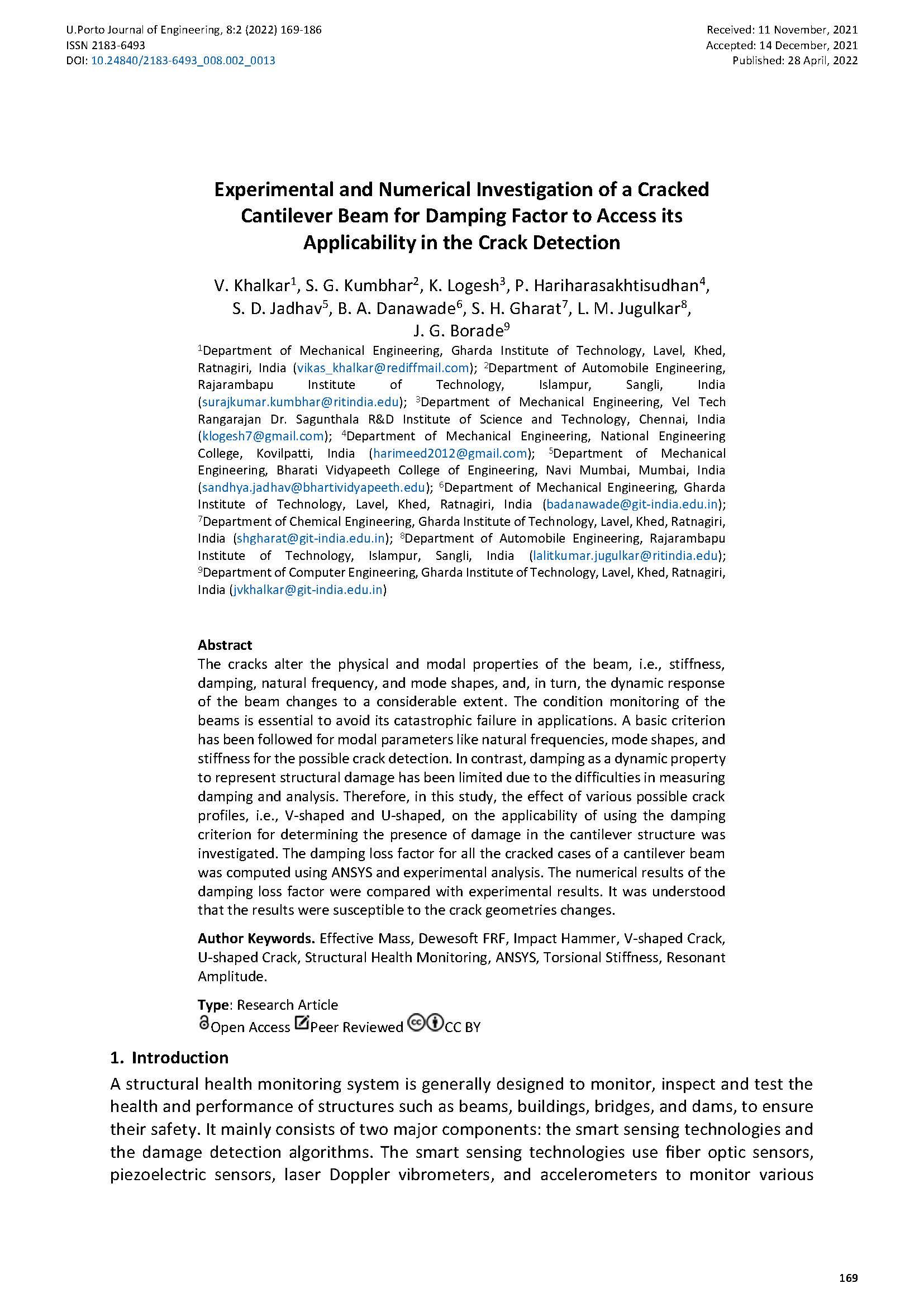Experimental and Numerical Investigation of a Cracked Cantilever Beam for Damping Factor to Access its Applicability in the Crack Detection
Main Article Content
Abstract
The cracks alter the physical and modal properties of the beam, i.e., stiffness, damping, natural frequency, and mode shapes, and, in turn, the dynamic response of the beam changes to a considerable extent. The condition monitoring of the beams is essential to avoid its catastrophic failure in applications. A basic criterion has been followed for modal parameters like natural frequencies, mode shapes, and stiffness for the possible crack detection. In contrast, damping as a dynamic property to represent structural damage has been limited due to the difficulties in measuring damping and analysis. Therefore, in this study, the effect of various possible crack profiles, i.e., V-shaped and U-shaped, on the applicability of using the damping criterion for determining the presence of damage in the cantilever structure was investigated. The damping loss factor for all the cracked cases of a cantilever beam was computed using ANSYS and experimental analysis. The numerical results of the damping loss factor were compared with experimental results. It was understood that the results were susceptible to the crack geometries changes.
Downloads
Article Details

This work is licensed under a Creative Commons Attribution 4.0 International License.
Authors who publish with this journal agree to the following terms:
- Authors retain copyright and grant the journal right of first publication with the work simultaneously licensed under a Creative Commons Attribution License that allows others to share the work with an acknowledgement of the work's authorship and initial publication in this journal.
- Authors grant the journal the rights to provide the article in all forms and media so the article can be used on the latest technology even after publication and ensure its long-term preservation.
- Authors are able to enter into separate, additional contractual arrangements for the non-exclusive distribution of the journal's published version of the work (e.g., post it to an institutional repository or publish it in a book), with an acknowledgement of its initial publication in this journal.
- Authors are permitted and encouraged to post their work online (e.g., in institutional repositories or on their website) prior to and during the submission process, as it can lead to productive exchanges, as well as earlier and greater citation of published work (See The Effect of Open Access).

